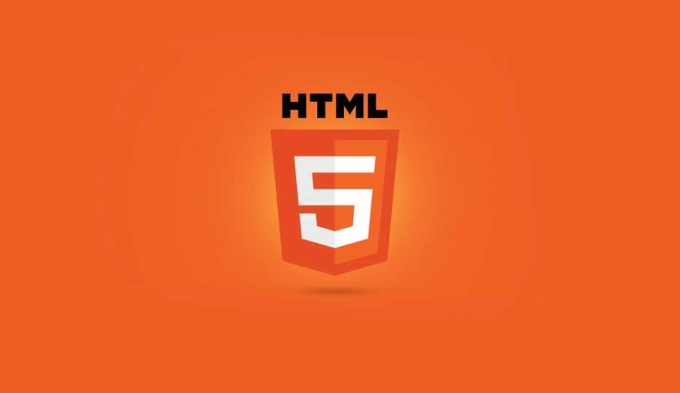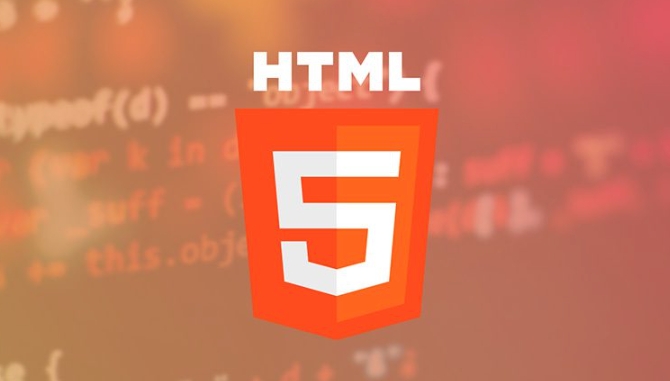The core of implementing offline web applications is to cache resources through Service Worker and take over network requests. The specific steps are as follows: 1. Register and activate Service Worker, check supportability and register sw.js file on the page, and preload key resources during the installation stage; 2. Intercept requests and return cached content, prioritize data from the cache, and obtain it online when there is no cache, and can also be processed separately according to resource type; 3. Update cache policy and version management, ensure content updates by changing the cache name and cleaning the old cache during the activation stage; 4. Test whether the offline function is normal, use Chrome DevTools to simulate the offline environment and verify the cache loading effect, and use Lighthouse to check PWA compliance.

Using HTML5 Service Workers to implement offline web applications, the core of this is just one sentence: let the website continue to run even if it is disconnected from the Internet . Service Worker is like a background agent that can cache resources, take over network requests, and even push notifications.

Let’s talk about how to use it to implement offline functions from several practical perspectives.

1. Register and activate Service Worker
To use Service Worker, the first step is to register it in the main page. This step is very simple, just add a piece of code to JavaScript:
if ('serviceWorker' in navigator) {
navigator.serviceWorker.register('/sw.js').then(function(registration) {
console.log('Service Worker registered successfully');
}).catch(function(error) {
console.log('Register failed:', error);
});
} This code will check whether the browser supports Service Worker, and then try to register a file called sw.js This file is your Service Worker script.

After registration, Service Worker will enter the "installation" phase, where you can preload key resources such as HTML, CSS, JS, and images.
self.addEventListener('install', event => {
event.waitUntil(
caches.open('my-cache-v1').then(cache => {
return cache.addAll([
'/',
'/index.html',
'/style.css',
'/app.js'
]);
})
);
});The key to this step is: cache resources that need offline access in advance .
2. Intercept the request and return the cached content
After the installation is complete, Service Worker will be triggered every time the page initiates a request. You can control request behavior here, such as prioritizing data fetching from cache, or getting from server when the network is available.
A common strategy is to "first see if there is a cache, then no networking". The code is roughly like this:
self.addEventListener('fetch', event => {
event.respondWith(
caches.match(event.request).then(response => {
return response || fetch(event.request);
})
);
});You can also control different types of requests more carefully, such as using only cache for static resources, and API requests go to the network:
if (event.request.url.startsWith('https://api.example.com')) {
// Special handling API request} else {
// Ordinary resources are cached network}3. Update cache policy and version management
The cache is not static. When you update the website resources, the old cache must be updated as well. Otherwise, users may keep seeing the old version of content.
The usual practice is to give the cache a new name (such as my-cache-v2 ) and then clean the old cache during the installation phase:
const CACHE_NAME = 'my-cache-v2';
self.addEventListener('activate', event => {
event.waitUntil(
caches.keys().then(keys => {
return Promise.all(
keys.filter(key => key !== CACHE_NAME)
.map(key => caches.delete(key))
);
})
);
});This step is to avoid cache accumulation while ensuring that users can get the latest content.
4. Test whether the offline function is normal
After development, don't forget to test it. Chrome DevTools provides great tools to simulate offline environments:
- Open the Network panel
- Check Offline
- Refresh the page to see if it still loads normally
If the page can still be displayed and the resource is loaded from (ServiceWorker) , it means that the cache is in effect.
In addition, you can also use Lighthouse to check PWA compliance, including offline support.
In general, using Service Worker to implement offline web applications is not complicated, but attention is required to be paid to the design of the cache policy, version update mechanism and actual testing. As long as these details are handled, users can use your website smoothly even if the Internet is disconnected.
Basically that's it.
The above is the detailed content of Implementing offline web applications with HTML5 Service Workers. For more information, please follow other related articles on the PHP Chinese website!

Hot AI Tools

Undress AI Tool
Undress images for free

Undresser.AI Undress
AI-powered app for creating realistic nude photos

AI Clothes Remover
Online AI tool for removing clothes from photos.

Clothoff.io
AI clothes remover

Video Face Swap
Swap faces in any video effortlessly with our completely free AI face swap tool!

Hot Article

Hot Tools

Notepad++7.3.1
Easy-to-use and free code editor

SublimeText3 Chinese version
Chinese version, very easy to use

Zend Studio 13.0.1
Powerful PHP integrated development environment

Dreamweaver CS6
Visual web development tools

SublimeText3 Mac version
God-level code editing software (SublimeText3)
 Adding drag and drop functionality using the HTML5 Drag and Drop API.
Jul 05, 2025 am 02:43 AM
Adding drag and drop functionality using the HTML5 Drag and Drop API.
Jul 05, 2025 am 02:43 AM
The way to add drag and drop functionality to a web page is to use HTML5's DragandDrop API, which is natively supported without additional libraries. The specific steps are as follows: 1. Set the element draggable="true" to enable drag; 2. Listen to dragstart, dragover, drop and dragend events; 3. Set data in dragstart, block default behavior in dragover, and handle logic in drop. In addition, element movement can be achieved through appendChild and file upload can be achieved through e.dataTransfer.files. Note: preventDefault must be called
 Using ARIA attributes with HTML5 semantic elements for accessibility
Jul 07, 2025 am 02:54 AM
Using ARIA attributes with HTML5 semantic elements for accessibility
Jul 07, 2025 am 02:54 AM
The reason why ARIA and HTML5 semantic tags are needed is that although HTML5 semantic elements have accessibility meanings, ARIA can supplement semantics and enhance auxiliary technology recognition capabilities. For example, when legacy browsers lack support, components without native tags (such as modal boxes), and state updates need to be dynamically updated, ARIA provides finer granular control. HTML5 elements such as nav, main, aside correspond to ARIArole by default, and do not need to be added manually unless the default behavior needs to be overridden. The situations where ARIA should be added include: 1. Supplement the missing status information, such as using aria-expanded to represent the button expansion/collapse status; 2. Add semantic roles to non-semantic tags, such as using div role to implement tabs and match them
 Securing HTML5 web applications against common vulnerabilities
Jul 05, 2025 am 02:48 AM
Securing HTML5 web applications against common vulnerabilities
Jul 05, 2025 am 02:48 AM
The security risks of HTML5 applications need to be paid attention to in front-end development, mainly including XSS attacks, interface security and third-party library risks. 1. Prevent XSS: Escape user input, use textContent, CSP header, input verification, avoid eval() and direct execution of JSON; 2. Protect interface: Use CSRFToken, SameSiteCookie policies, request frequency limits, and sensitive information to encrypt transmission; 3. Secure use of third-party libraries: periodic audit dependencies, use stable versions, reduce external resources, enable SRI verification, ensure that security lines have been built from the early stage of development.
 Integrating CSS and JavaScript effectively with HTML5 structure.
Jul 12, 2025 am 03:01 AM
Integrating CSS and JavaScript effectively with HTML5 structure.
Jul 12, 2025 am 03:01 AM
HTML5, CSS and JavaScript should be efficiently combined with semantic tags, reasonable loading order and decoupling design. 1. Use HTML5 semantic tags, such as improving structural clarity and maintainability, which is conducive to SEO and barrier-free access; 2. CSS should be placed in, use external files and split by module to avoid inline styles and delayed loading problems; 3. JavaScript is recommended to be introduced in front, and use defer or async to load asynchronously to avoid blocking rendering; 4. Reduce strong dependence between the three, drive behavior through data-* attributes and class name control status, and improve collaboration efficiency through unified naming specifications. These methods can effectively optimize page performance and collaborate with teams.
 Using HTML5 Semantic Elements for Page Structure
Jul 07, 2025 am 02:53 AM
Using HTML5 Semantic Elements for Page Structure
Jul 07, 2025 am 02:53 AM
Using HTML5 semantic tags can improve web structure clarity, accessibility and SEO effects. 1. Semantic tags such as,,,, and make it easier for the machine to understand the page content; 2. Each tag has a clear purpose: used in the top area, wrap navigation links, include core content, display independent articles, group relevant content, place sidebars, and display bottom information; 3. Avoid abuse when using it, ensure that only one per page, avoid excessive nesting, reasonable use and in blocks. Mastering these key points can make the web page structure more standardized and practical.
 HTML5 video not playing in Chrome
Jul 10, 2025 am 11:20 AM
HTML5 video not playing in Chrome
Jul 10, 2025 am 11:20 AM
Common reasons why HTML5 videos don't play in Chrome include format compatibility, autoplay policy, path or MIME type errors, and browser extension interference. 1. Videos should be given priority to using MP4 (H.264) format, or provide multiple tags to adapt to different browsers; 2. Automatic playback requires adding muted attributes or triggering .play() with JavaScript after user interaction; 3. Check whether the file path is correct and ensure that the server is configured with the correct MIME type. Local testing is recommended to use a development server; 4. Ad blocking plug-in or privacy mode may prevent loading, so you can try to disable the plug-in, replace the traceless window or update the browser version to solve the problem.
 Embedding video content using the HTML5 `` tag.
Jul 07, 2025 am 02:47 AM
Embedding video content using the HTML5 `` tag.
Jul 07, 2025 am 02:47 AM
Embed web videos using HTML5 tags, supports multi-format compatibility, custom controls and responsive design. 1. Basic usage: add tags and set src and controls attributes to realize playback functions; 2. Support multi-formats: introduce different formats such as MP4, WebM, Ogg, etc. through tags to improve browser compatibility; 3. Custom appearance and behavior: hide default controls and implement style adjustment and interactive logic through CSS and JavaScript; 4. Pay attention to details: Set muted and autoplay to achieve automatic playback, use preload to control loading strategies, combine width and max-width to achieve responsive layout, and use add subtitles to enhance accessibility.
 Drawing Graphics and Animations using HTML5 Canvas
Jul 05, 2025 am 01:09 AM
Drawing Graphics and Animations using HTML5 Canvas
Jul 05, 2025 am 01:09 AM
HTML5Canvas is suitable for web graphics and animations, and uses JavaScript to operate context drawing; ① First add canvas tags to HTML and get 2D context; ② Use fillRect, arc and other methods to draw graphics; ③ Animation is achieved by clearing the canvas, redrawing, and requestAnimationFrame loops; ④ Complex functions require manual processing of event detection, image drawing and object encapsulation.






